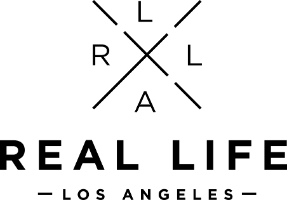January 22 --
Indian field hands at San Juan Capistrano mission refused to work, engaging in what was probably the first farm worker strike in California - 1826
Birth of Terence V. Powderly, leader of the Knights of Labor - 1849
Five hundred New York City tenants battle police to prevent evictions - 1932
It was the morning of January 22, 1932, in a quiet, middle-class neighborhood of the Bronx. A crowd was gathering in front of 2302 Olinville Avenue, near the Bronx Park.
City Marshals and Police had moved in to evict 17 tenants who were on a "rent strike". A crowd of 4,000 had gathered nearby.
When the marshals moved into the building and the first stick of furniture appeared on the street, the crowd charged the police and began pummeling them with fists, stones, and sticks, while the "non-combatants urged the belligerents to greater fury with anathemas for capitalism, the police and landlords." The outnumbered police barely held their lines until reinforcements arrived.
Every single reserve police officer in the Bronx had to be called in to prevent being routed by the rioters.
The situation at Olinville Avenue was only calmed down when a compromise was reached.
the strikers agreed to a compromise offer that called for two- to three-dollar reductions for each apartment and the return of evicted families to their apartments. "When news of the settlement reached the crowd," the Bronx Home News reported, "they promptly began chanting the Internationale and waving copies of the Daily Worker as though they were banners of triumph."
In other words, the rent strikers won a complete, if temporary victory.
At nearby 665 Allerton Avenue the same scenario was repeated when the police attempted to evict three tenants.
"The women were the most militant," noted the New York Times they constituted the majority of the crowds, the arrestees, and those engaged in physical conflict with the police. This time, the evictions did occur, but only with the help of over fifty foot and mounted police and a large and expensive crew of marshals and moving men.
After the Battle of the Bronx, as it was later called, the landlords at Bronx Park East asked a blue ribbon committee of Bronx Jewish leaders to arbitrate the dispute. But the strike leaders rejected arbitration. "When times were good," strike leader Max Kaimowitz declared "the landlords didn't offer to share their profits with us. The landlords made enough money off us when we had it. Now that we haven't got it, the landlords must be satisfied with less."http://www.economicpopulist.org/content/unemployed-councils-eviction-riots-and-new-deal
The Battle of the Bronx
The Coops were "a little corner of socialism right in New York," one activist recalled, "it had its own educational events, clubs for men and women, lectures, motion pictures." But the rest of the neighborhood's population, while not so militantly radical, came from comparable backgrounds to the Coops people. The majority were Eastern European Jews, skilled workers and small businessmen who had accumulated enough income to move out of the East Side and the South Bronx, but were hardly secure in their middle-class status. More important, many of them grew up in environments in which socialism and trade unionism provided models of heroism and moral conduct, and more than a few had extensive activist backgrounds, whether in bitter garment strikes in New York City or clandestine revolutionary struggle in Europe. Although relatively "privileged" compared to many New York workers ("Certain comrades . . . wanted to ridicule the movement," one rent strike organizer wrote apologetically, "not realizing that these 'better paid workers' are members of the American Federation of Labor, many of them working in basic industries"), they suffered serious losses of income and employment and were not about to sink quietly into poverty and despair in response to the "invisible hand" of the market. When Unemployed Council activists began to organize them into tenant committees, they responded in a manner that perplexed and enraged landlords and city officials.
In early January of 1932, the Upper Bronx Unemployed Council unveiled rent strikes at three large apartment buildings in Bronx Park East -- 1890 Unionport Road, 2302 Olinville Avenue, and 665 Allerton Avenue. In each of these buildings, the majority of the tenants agreed to withhold their rent and began picketing their buildings to demand 15 percent reductions in rent, an end to evictions, repairs in apartments, and recognition of the tenants committee as an official bargaining agent. In all three instances, landlords, moving quickly to dispossess leaders of the strike, argued that the demands were extortionate; judges readily granted them notices of eviction.
http://www.tenant.net/Community/history/hist03d.html








No comments:
Post a Comment